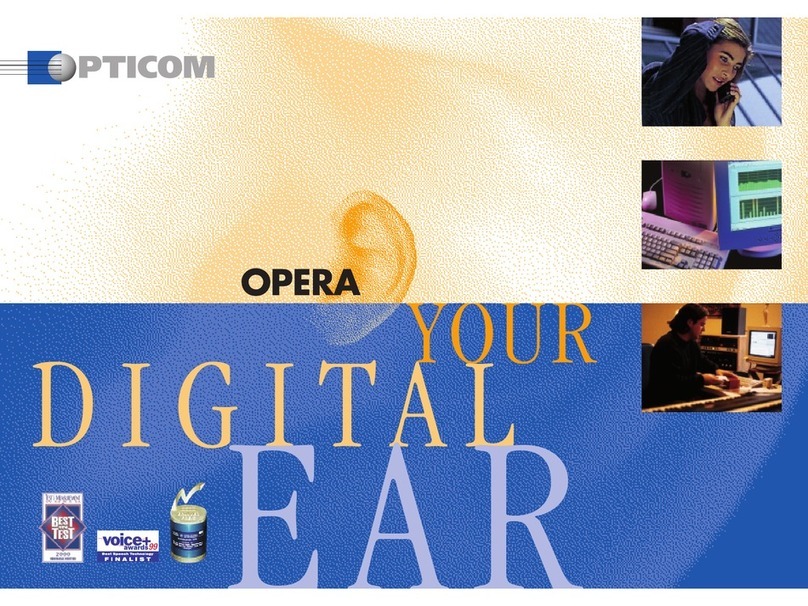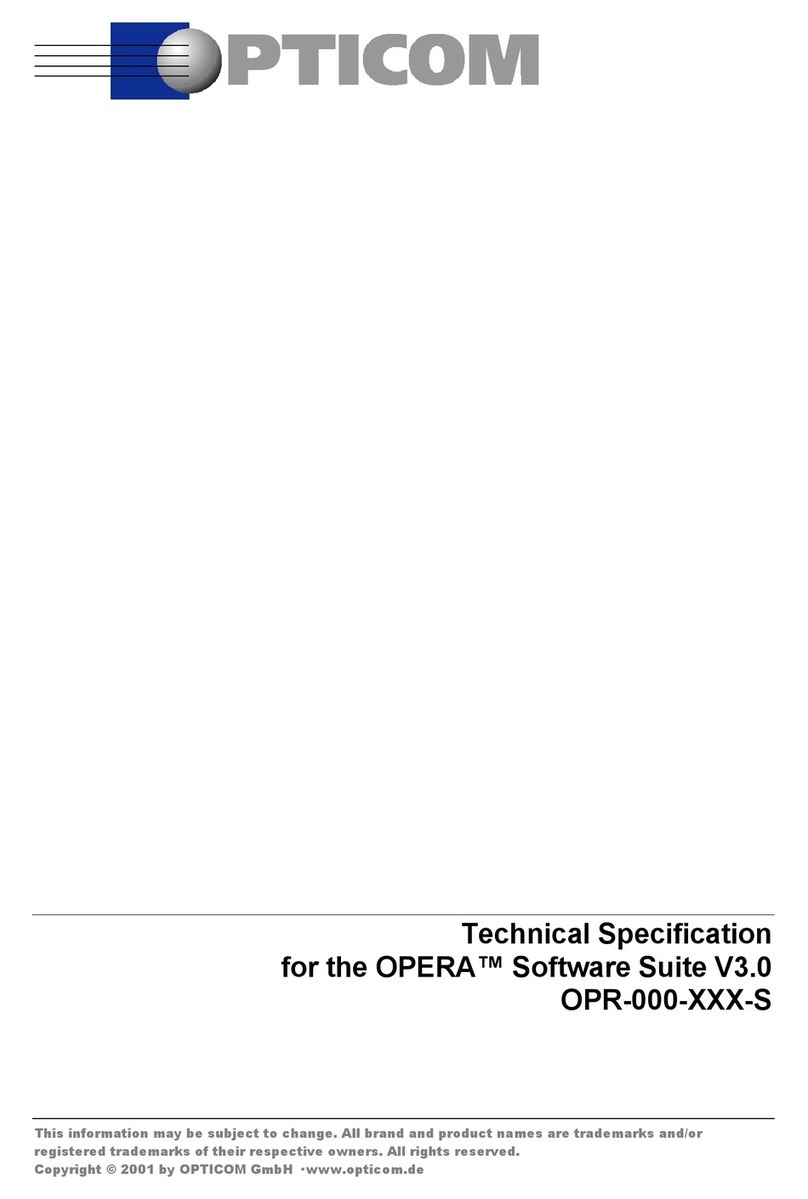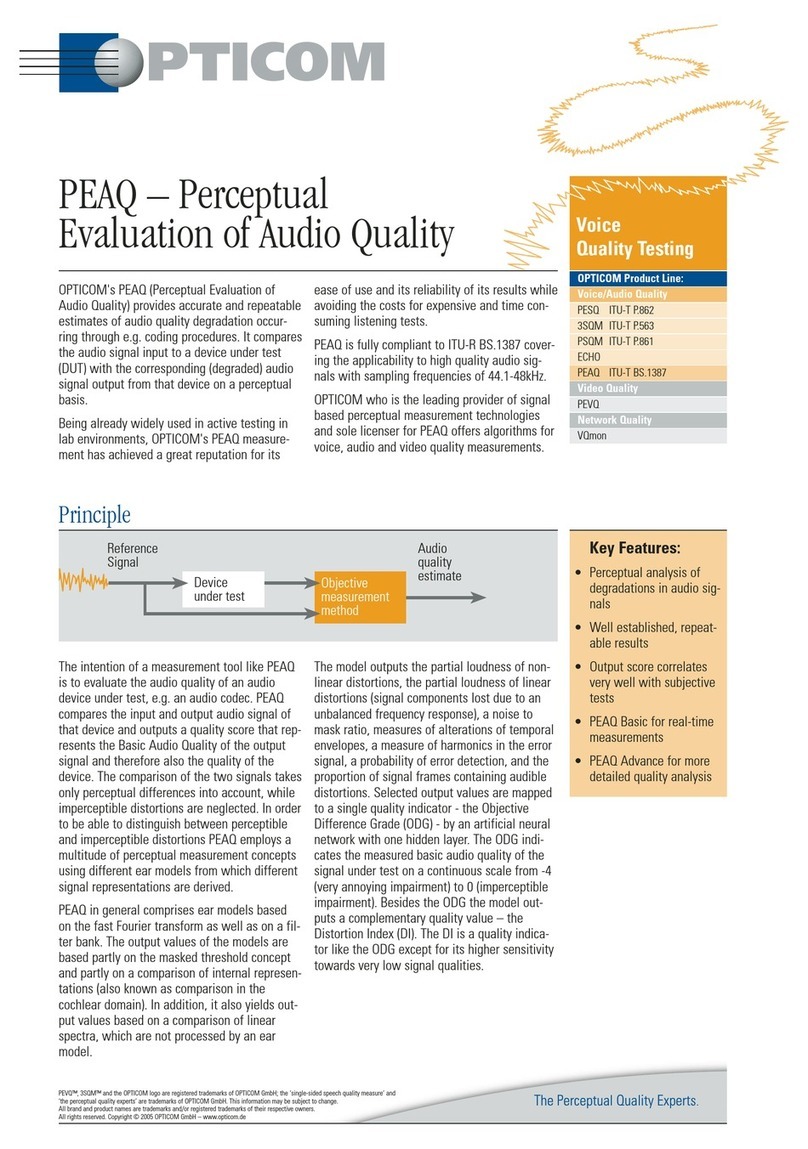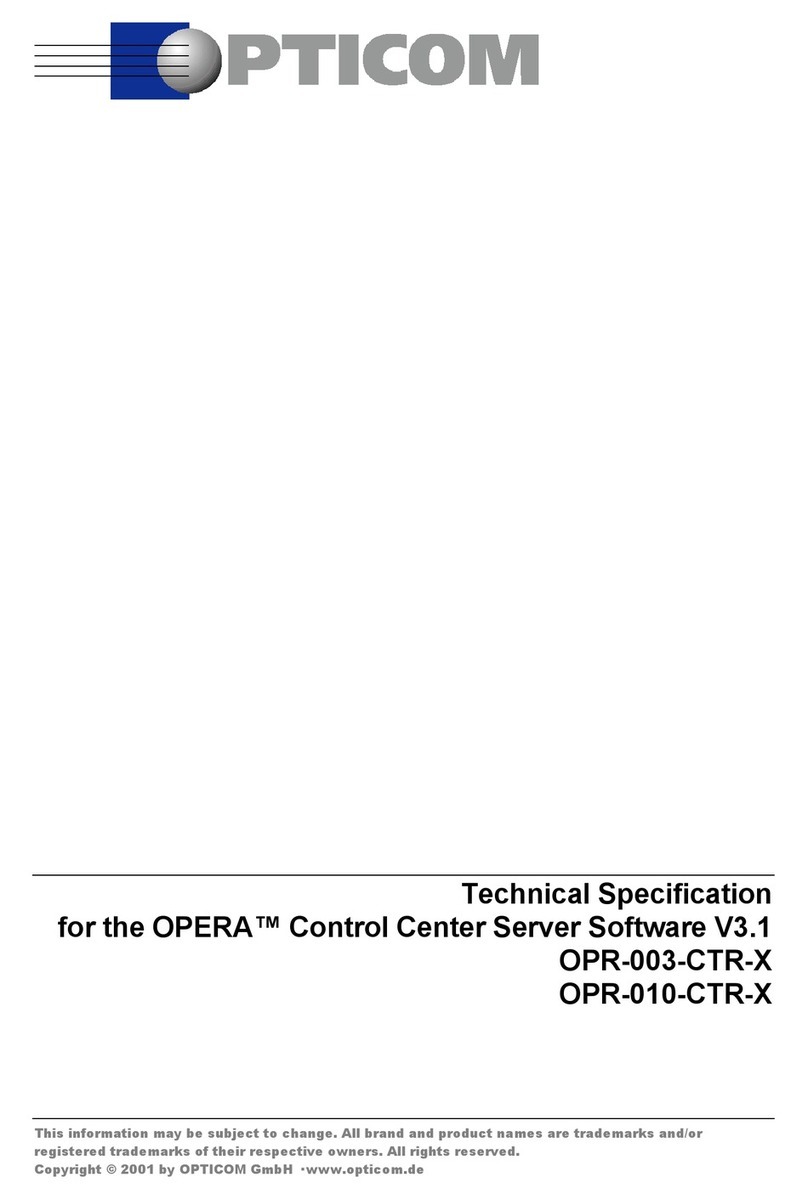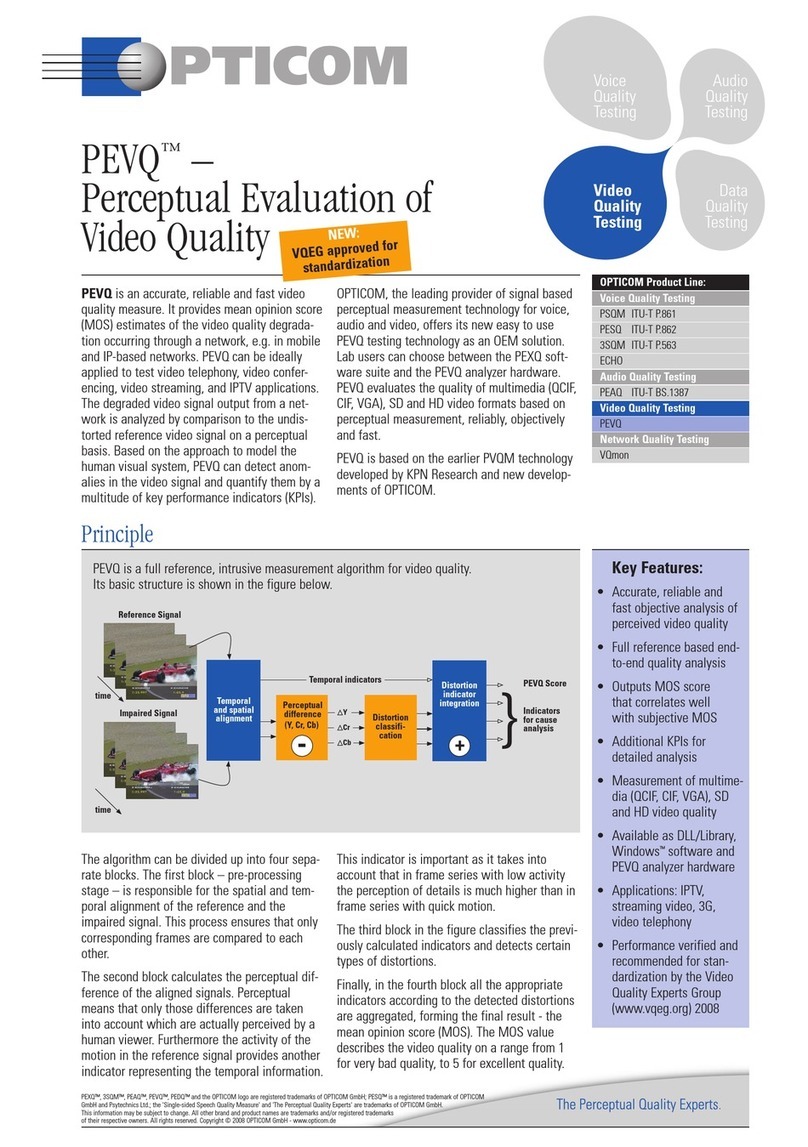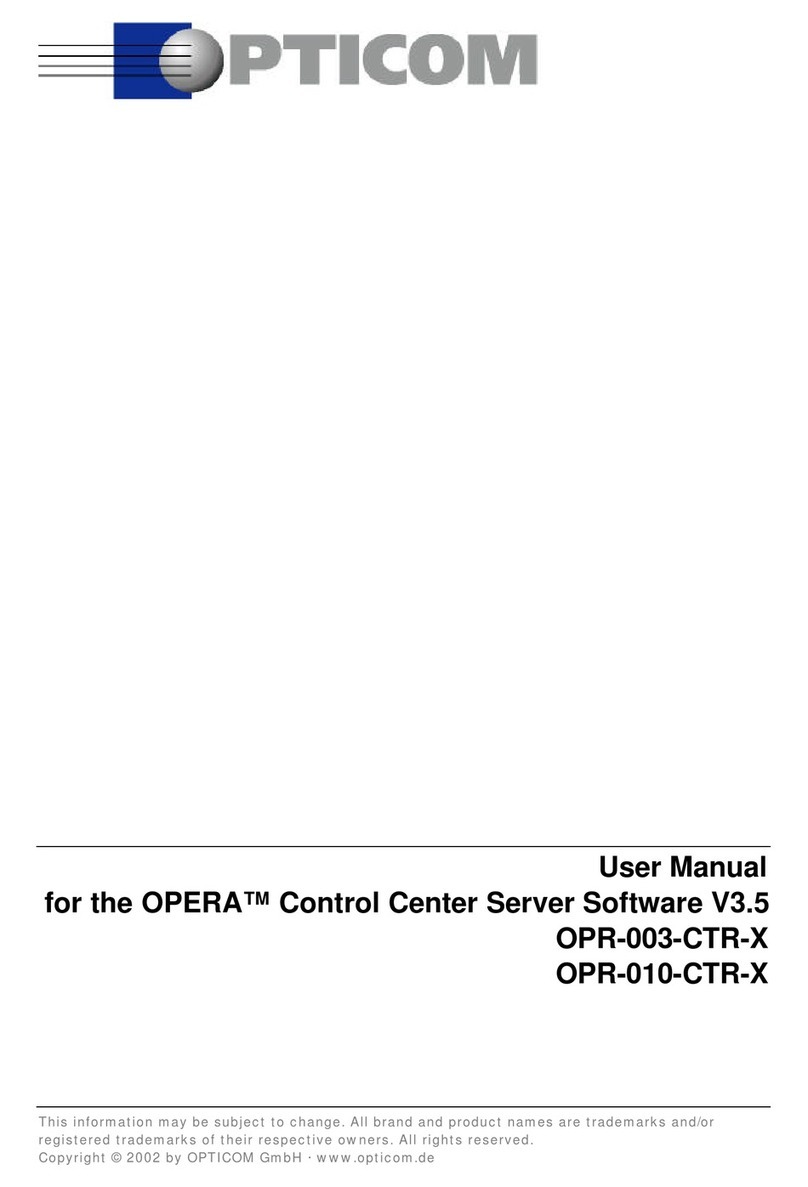PEVQ™, 3SQM™ and the OPTICOM logo are registered trademarks of OPTICOM GmbH; the ‘single-sided speech quality measure’ and
‘the perceptual quality experts’ are trademarks of OPTICOM GmbH. This information may be subject to change.
All brand and product names are trademarks and/or registered trademarks of their respective owners.
All rights reserved. Copyright © 2005 OPTICOM GmbH – www.opticom.de
About OPTICOM
With PSQM, PESQ and PEAQ,
OPTICOM GmbH, the pioneer
in perceptual quality testing
has been providing three
international world-class
standards for voice and audio
quality measurement since
its foundation in 1995. With
their new single-sided
speech quality measure
3SQM™, a joint development
with partners, the perceptual
experts from Germany now
presented their fourth ITU
standard. At its 10th anniver-
sary, the presentation of the
new PEVQ™ video measure
leverages the company’s
huge experience towards the
multimedia testing domain.
Recognized an industry refer-
ence, OPTICOM’s OPERA
voice/audio quality test tools
are available to users world
wide. And while specialized
on OEM customers in particu-
lar, the directory of OEM
licensees today reads like the
‘Who-is-Who’ of the
Telecoms industry. OPTICOM
is a privately held company
located in Erlangen, Germany.
Sales Contacts:
OPTICOM GmbH
Nägelsbachstraße 38
91052 Erlangen, GERMANY
Phone: +49-9131/53020-0
Fax: +49-9131/53020-20
www.opticom.de
North America:
Telchemy Inc.
Phone +1-770-614-6944
JDSU - Acterna U.S.
Phone +1-301 353 1560 2850
Europe, Latin America,
Middle East & Africa,
Asia Pacific, CIS Countries:
JDSU - Acterna
Germany GmbH
Phone: +49-7121 86 2222
Through our distributor net-
work, we are represented in
more than 80 countries. To find
your local sales office, please
Specifications
Functionality
• ITU-T P.862.x Perceptual Evaluation of
Speech Quality, with mapping to MOS scale
• Narrowband and Wideband operation
Input
• 16 bit linear audio sampled at 8kHz and
16kHz
• Input voice files 6 to 20 seconds in length
Output
• VAD measurements (front end clipping, hold
over time)
• Drop out measurement
• Delay measurement and statistics (min, max,
average, delay vs. time, histogram)
• MOS vs. time
• MOS for speech and silent parts separately
• Attenuation
• Speech level (total, active speech, silence,
reference, test separately)
• Loudness (reference, test)
• AGC measurement
• R Factor (LQ)
Complexity
• P.862 is processed in about 10-20 times
faster than real-time on a Pentium III
733MHz (44-125MFLOPs)
• Data memory: 5.2MB for file pair with 8s
length
• Code memory: App. 200-400kb (depending
on used features and optimizations)
• Floating point library required
Platforms
• Windows
• Linux
• Solaris
PESQ – Perceptual Evaluation of Speech Quality
One of the major advantages of PESQ over
other measurement approaches is that it does
not need to make any assumptions on the net-
work under test or the distortion types that may
occur in a specific telephony test scenario. The
only prerequisite employed within the model is
the scientific knowledge on how human speech
is produced and how humans perceive it.
PESQ already includes the effects of both pack-
et level impairments (loss, jitter) and signal
related impairments such as noise, clipping and
distortions caused by coding processes. The
impairment model, based on this knowledge is
as generic as it can be and therefore independ-
ent from current and future telephony applica-
tions and networks.












